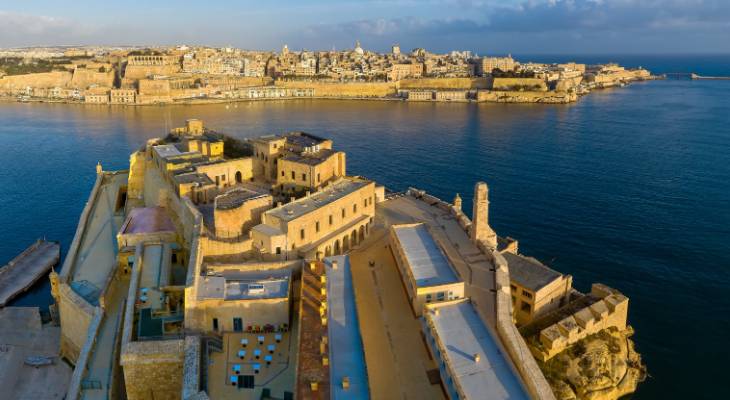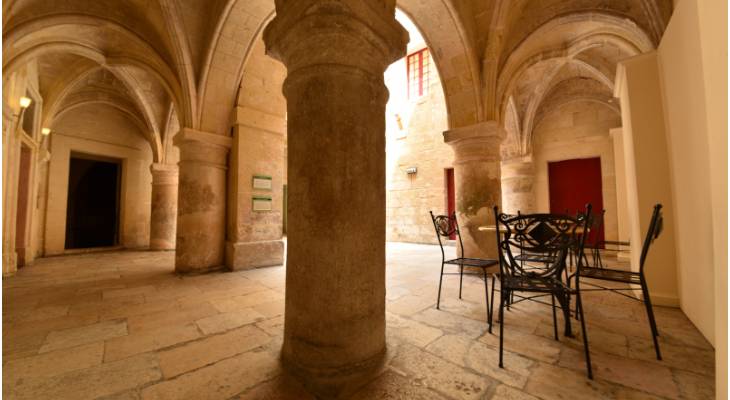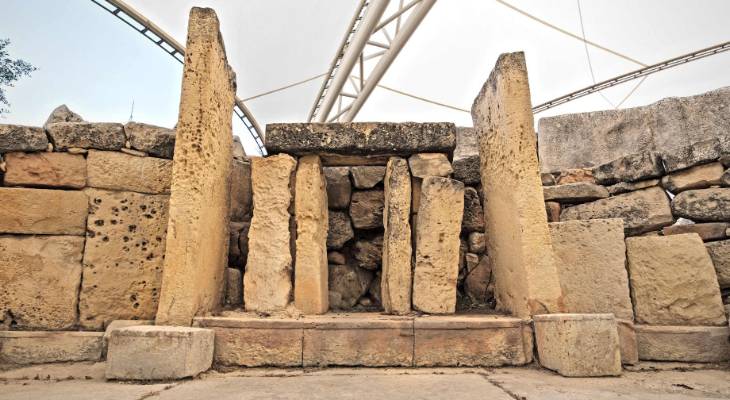Journey through the ages: Discover all the sites surrounding the mighty Grand Harbour
A Heritage Malta Harbour Combo ticket allows access to Fort St Angelo, Tarxien Temples, and the Inquisitor's Palace.
Have you visited the gardjola (watchtower), perched high above Fort St Angelos's limestone bastions, recently? On a calm summer's day, the vast expanse of the azure Mediterranean lies glistening peacefully beyond the entrance to the Grand Harbour.
From that same spot, you can travel back in time to May 1565, imagining the dismay on the sentinel's face as he did a double take… rubbing his eyes to make sure what he’s witnessing is not a mirage. Some 200 crescents are fluttering over the great Ottoman fleet gathering on the horizon.
By all accounts, the Turkish armada, summoned by Suleiman the Magnificent, was one the largest assembled since antiquity.
The Maltese islanders have always had an uneasy relationship with the sea that surrounds them.
On the one hand, it has been a source of sustenance and commerce; on the other, a means of invasion and piracy. Encircled by Valletta, Marsa, the Three Cities, Kalkara, and Rinella, the Grand Harbour has throughout the centuries been the ultimate recipient of this double-edged sword.
And it’s never been easier to experience all it has to offer!
Now, armed with a Heritage Malta Harbour Combo ticket which allows access to Fort St Angelo, Tarxien Temples, and the Inquisitor's Palace, the entry point to so many conquests and cultural exchanges is yours to explore!
Sea transport makes it all more accessible – you just hop on a traditional dgħajsa or ferry from the capital and rock up at your first point of call.
Discover Fort St Angelo…

Strategically located on a hillock at the end of the Birgu peninsula, Fort St Angelo dominates the Grand Harbour. Throughout history, control of this fort meant effective mastery of the Maltese Islands. Indeed, no other fortress has been engaged with the same intensity in the shaping of Malta's destiny.
Originally the site of a Phoenician temple dedicated to the Goddess Astarte, by 1274, a stronghold known as Castrum Maris (castle-by-the-sea ) was established by Sicilian overlords as a guarantee of their interests in the Maltese Islands.
In 1530, it was taken over by the Knights of St John, who christened this military structure as Fort St Angelo and turned it into their headquarters. During the Great Siege of 1565, against all odds, the fort valiantly repudiated the onslaught of the Ottoman invasion. Its walls were piled high with the bodies of the dead, and its moat was stained crimson with the blood of both besiegers and defenders.
In 1689, military engineer Carlos Grunenbergh spearheaded the fort's overhaul, including four intimidating gun platforms with a capacity of some 50 artillery pieces. Under British Colonial rule, Fort St Angelo was classified as a stone frigate and referred to as HMS Egmont or later HMS St Angelo. At the onset of World War II, the fort was once more called into action to offer protection against the Axis air raids. It sustained 69 direct hits during bombings.
...before making your way to The Inquisitor’s Palace...

Imagine being incarcerated in a cold and damp prison cell, terrified and afraid, unable to sleep beacause tomorrow you will stand before the stern gaze of the Inquistor, accused of spiritual crimes for which you may pay an excruciatingly painful price.
A short walk away from Fort St Angelo, The Inquisitor's Palace is the only inquisitorial palace in the world still presented as such and made accessible to the public. Between 1574 and 1798, it served as residence and tribunal to the Inquisitor in his dual role of supreme judge of the Holy Office and a cultured and powerful Apostolic Delegate representing the Vatican's interests in Malta.
Together with the National Museum of Ethnography, visitors can explore the spine-chilling setting of the Holy Office Tribunal, the prison complex, and torture chamber. Less steely nerves are required to saunter through the more sophisticated ambience of the piano nobile and private quarters inhabited by a roll call of austere spiritual judges that included two future Popes amongst them.
…or travelling even further in time

Now it’s time to journey into mystery back to the dawn of civilisation. A brief bus ride away in a neighbouring village, the Neolithic Tarxien Temples were discovered in 1913 by local farmers. Inscribed in the UNESCO World Heritage List, this intriguing site consists of a complex of four megalithic structures built between 3800 and 2200 BC. Re-used as a Bronze Age cremation cemetery, the South Temple is the most highly decorated, with its relief sculpture and the lower part of a colossal statue of a skirted figure. Who were these temple builders and how did they build these monumental structures?
Harbour Combo tickets (valid for 30 days from date of first use) may be purchased at all Heritage Malta museum and site shops or online www.heritagemalta.org